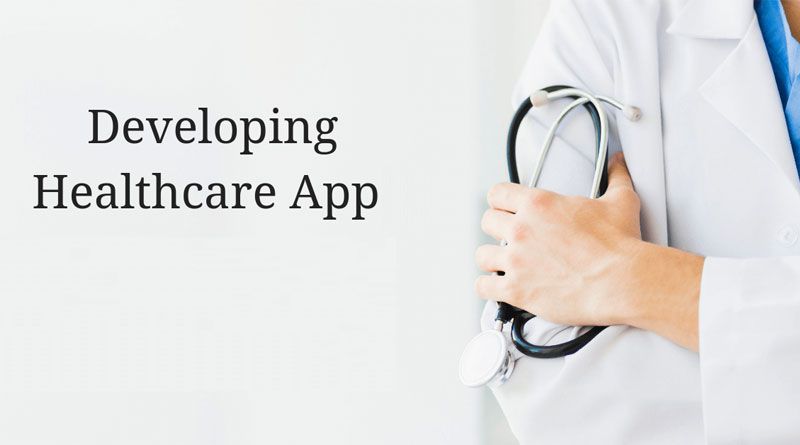Health is wealth and the recent pandemic time has shown us the importance of good health. Thankfully, advancing technology helps us monitor the health condition and schedule an appointment online if there is an issue. Yes, a healthcare mobile app makes it possible. As per the Statista report, the digital health market is expected to reach $206 billion by 2020 thanks to wireless and mobile technology. This is the reason many healthcare service providers want to bring a feature-rich healthcare app.
But, here the question arises – “What do you require for developing an appealing and seamlessly-performing app for your healthcare organization?” This blog attempts to answer your question in a step-by-step way. Let’s start from scratch and see the main types of healthcare apps.
Step 1. Types of Healthcare Apps
These days, the fitness category is also included in the healthcare app and as a result, a special category called lifestyle app has emerged. However, here we focus only on health services. So our three types of apps are-
Emergency Apps – These apps are designed for emergencies. If the user feels bad or has something wrong with their health, they can simply tap a Help button in the app, which will send a request to the hospital with the location. Users can also find nearby clinics through these apps and take a cab if their health condition is not critical. We can say these emergency apps life-saving apps.
Reminder Apps – This type of apps track medication and give the users reminders for taking their medicines on time. Reminder apps are ideal for aged patients or patients who keep on forgetting taking pills on time.
EHR/EMR Apps – These apps store Electronic Health Records (EHR) and Electronic Medical Records (EMR). EHR apps have the data related to all diseases whereas EMR apps have the data related to a specific disease only. An EMR app can act as an electronic copy of the disease history.
Step 2. Key Features of Healthcare Apps
Before moving to healthcare app development, you need to work on the key features of healthcare apps. Benefits like improved efficiency, permanent access, and reduced cost can be leveraged with the help of customized features. The healthcare app features are based on the app type and the patient’s needs. Some of the major features include geolocation, scheduling or reminder, real-time chat, and payment gateway integration. These features are aimed at improving services and reducing costs. Features like push notifications can stay the app users updated about their scheduled appointment, medication, and the like. Chatbots provide 24/7 assistance to app users.
Step 3. Compliance Requirements for Healthcare Apps
Healthcare apps need to comply with legal and privacy regulations because they have confidential data of patients along with their financial information like credit or debit card number. What’s more, various countries have imposed different rules and regulations for the healthcare sectors. For example, any US-based healthcare app must comply with HIPAA regulations. If you want to target people in Europe, the app should be GDPR-compliant. What’s more, healthcare apps should have PCI-DSS compliance for secure online payment.
After developing the app, you need to publish it on the app stores. Here, Google Play and Apple App Store have different standards that the app owners have to follow. Apple guidelines are more stringent than Google Play rules. It is necessary to pay more attention to the Health Research section when it comes to publishing your app on the App Store.
Step 4. Find the right Healthcare App Development Company
This is the most crucial step after defining features and making an app strategy. A robust and reliable healthcare app development partner is necessary to build high-quality healthcare apps. If the app development company has vast experience of developing apps for different industry verticals then chances are high that they can come up with a more innovative and user-friendly app. Also, the mobile app development company should have good reviews and expertise in developing healthcare software.
Step 5. Top Reasons Why Healthcare Apps Fail
Let’s face it! Even if the app has user-friendly features it can get failed because of poor UX (User Experience) and lack of skills in healthcare app development. A stereotype app will not attract users and fail to retain them for a long time. It is necessary to include important features with excellent performance. Last but not the least reason is- the failure of the app to comply with the prevalent standards. It is necessary for the app to comply with local regulations based on the region. Also, the app development company should test the app properly to ensure QA.
Wrapping Up
A feature-rich and user-friendly healthcare app can take healthcare organization to the next level by improving services and enhancing the patient experience. In these five steps, regulation compliance is the most important step because the healthcare sector and app are heavily regulated, and if there are flaws in data security, then people may prefer to stay away from your healthcare application.

Namaste UI collaborates closely with clients to develop tailored guest posting strategies that align with their unique goals and target audiences. Their commitment to delivering high-quality, niche-specific content ensures that each guest post not only meets but exceeds the expectations of both clients and the hosting platforms. Connect with us on social media for the latest updates on guest posting trends, outreach strategies, and digital marketing tips. For any types of guest posting services, contact us on info[at]namasteui.com.


Nice blog. Step by step guide for healthcare app Really very informative and creative contents. This concept is a good way to enhance the knowledge.